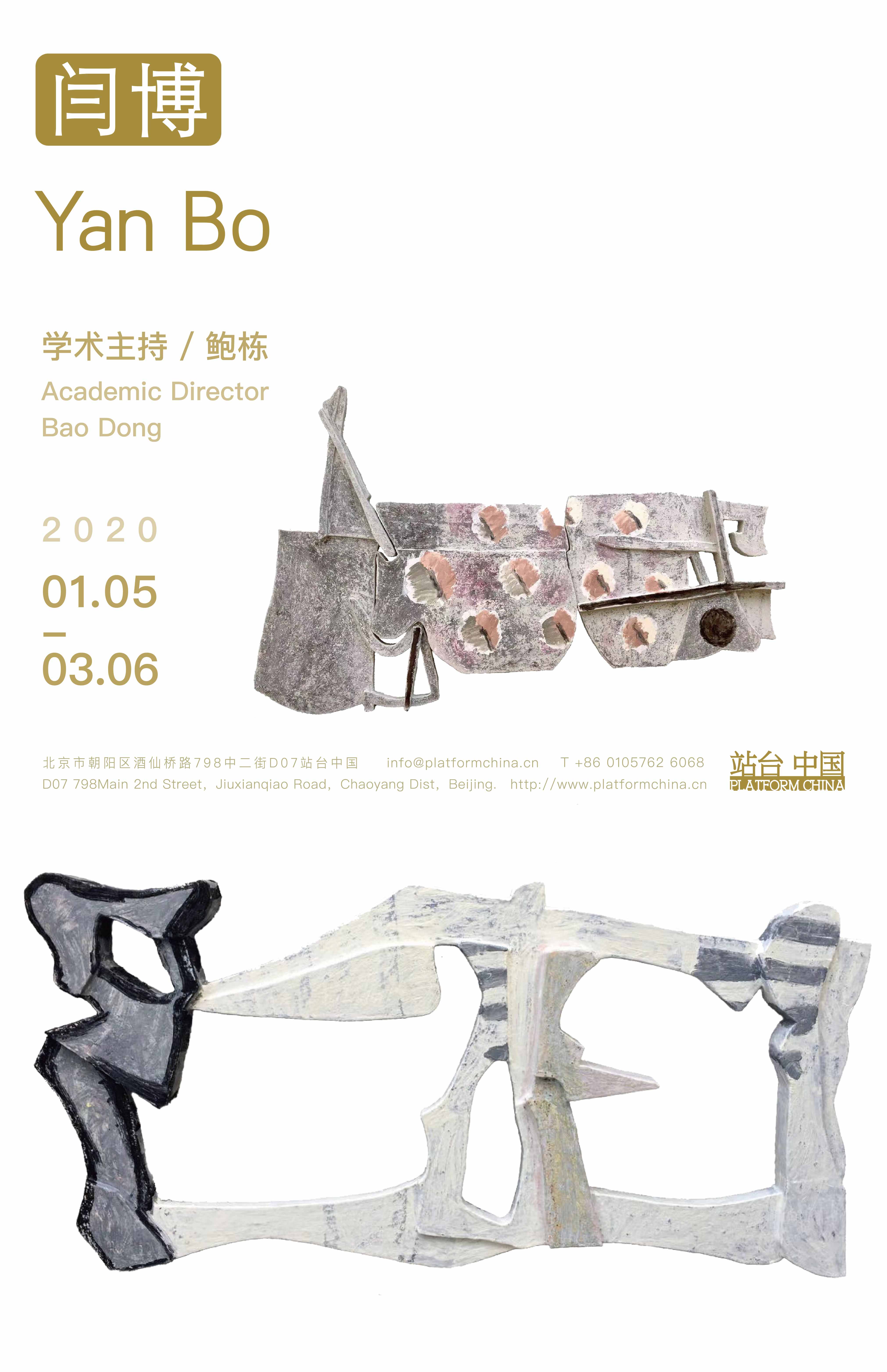
Platform China Contemporary Art Institute is honored to present Yan Bo Solo Exhibition on January 5th, 2020 in our main exhibition hall.
Born in Beijing in 1970, Yan Bo has held exhibitions in many places since the mid-1990s, including Beijing, Hong Kong, Singapore and Taiwan. He changed his work direction and started to study onnon-objective painting from materials in 2008. Since 2013, Yan has abandoned“rectangular plane”, a criterion of modernist painting concept he consciously followed in early days, and used rugged, thick and shaped base in painting. He has followed such practice since then. His work starts from an inexplicable shape, and ends when a self-recognized positive result occurs after changes in the long painting process. This is the process each of his works has undergone. This is strange and wishful for him, like changing light, the excitement when the secrets are unveiled, and also puzzle he laid in excitement. He tried hard to find, approach, overturn it, over and over again until a positive resulte merges. These traces are the traces of his life, and also the proofs of his soul. He marches forward in this way and always enjoys such process.
What kind of paintings can be closely associated with us and move our heart constantly? Yan chose to start from matter to create the basis of painting with rich visual perception, studied on the processing technique of the materials of painting, and then realized the exquisiteness of artistic works. He constantly tried different kinds of materials, to look for the materials of his painting – which are not existing materials in reality, but painting materials gained through a new way of material processing. Such materials impress people with a sense of architectureand metal and stone, making his works complete and full of highly perfect technical aesthetic feeling. His works also naturally demonstrate nobility and perfection. What he is pursuing for is creative work with the value of arthistory. He also expects to contribute something new with visual art value to China’s contemporary art in this era.
In fact, the truth of rectangular plane is the nature of painting, and rectangular plane –the concept of modernist painting – is the virtue of painting. Modernist abstractmasters did the same thing before, but they all stopped at the boundary of rectangular frame; abstract expressionist painters tried to break through the boundary, but they mostly missed the internal tension of feeling; and minimalists totally transcended the boundary, but they lost the feeling itself. To some extent, the works of Yan are most close to the work of surrealists, and squeeze out perceptual freedom through heteronomy. Each time, he must be faced with the painting bases of different shapes and bodies almost obsessively, and then cover, destroy, and overturn the bases through painting. During the process of fighting, feeling is redeemed step by step from physical fact, and finally become aesthetics. This is definitely where Yan transcended romanticism and formalism like “formal beauty”. Romanticism sets people as subject, so the sensibility of romanticism is almost transient and even mannered, and only romanticism encountering lofty objects can be seen as aesthetics because aesthetics includes universal pursuit seeing from normative connotation. In Yan’s work, the relationship between form and sensibility is not a default fact; rather, it is necessary to fight constantly, or it is a constant pursuit fact. In this sense, Yan cares about the “virtueof form”, i.e., contemporary resolution that sensibility “should be so”. For now, form has been legal and art is okay whatever way, it is one thing when easily alleging art discipline, and it is another thing when connecting art with people’s advancement. Yet, the latter is the virtue of art.